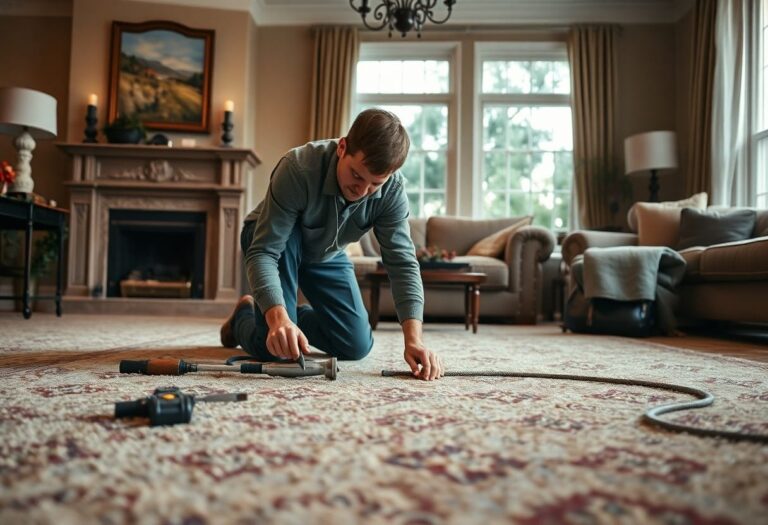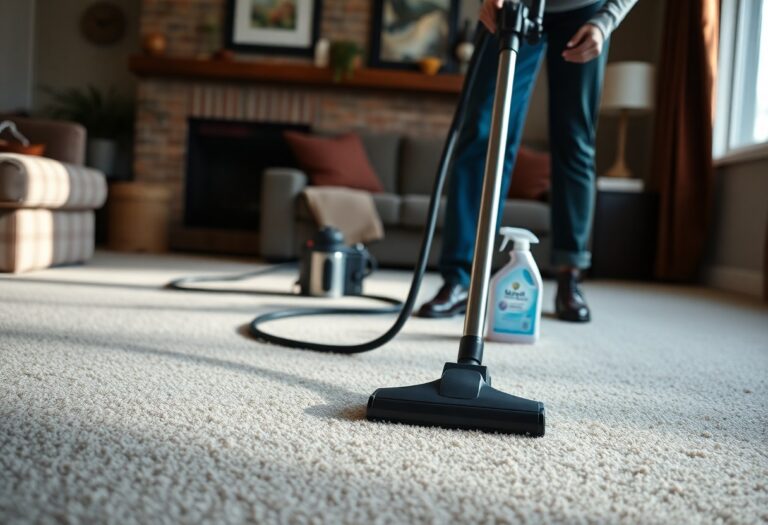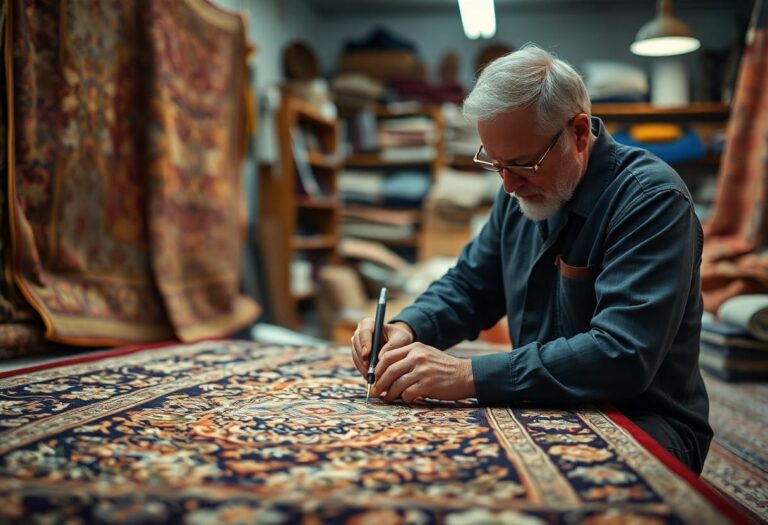You might be surprised to learn that industrial carpet installers in Cincinnati face a range of unique challenges that require skill and adaptability. From navigating restrictive timelines and managing complex site conditions to ensuring compliance with local regulations, your job goes beyond simple installation. Additionally, the fluctuating weather can impact your projects, while maintaining safety standards in high-risk environments adds another layer of complexity. Understanding these challenges helps you enhance your strategies and achieve successful installations in this vibrant city.
Key Takeaways:
- Urban Environment: Cincinnati’s dense urban landscape poses logistical challenges for carpet installers, including limited parking and navigating through congested areas to transport materials.
- Variable Weather Conditions: Installers must adapt to Cincinnati’s fluctuating weather, which can affect moisture levels and temperature, making it important to ensure proper installation conditions to avoid long-term issues.
- Regulatory Compliance: Navigating local regulations and building codes in Cincinnati is necessary, requiring installers to stay informed about city-specific requirements that may impact the installation process.
Climate and Environmental Considerations: The Cincinnati Dilemma
Cincinnati’s unique climate presents a distinct set of challenges for industrial carpet installers. The city’s humid subtropical climate leads to fluctuating temperatures and moisture levels, impacting both installation processes and material choices. From unseasonably warm summers to damp winters, each season introduces its own set of operational hurdles, making it necessary for you to stay informed about the implications of local weather on your work.
Weather-Related Challenges for Contractors
Adverse weather conditions can significantly affect your installation schedule. Heavy rain or unexpected winter storms in Cincinnati may delay projects. Furthermore, outdoor elements can infiltrate indoor spaces, causing issues like puddling that complicate your installation process. Flexibility in your project timeline and efficient preparation can help anticipate these disruptions.
Material Performance in Humid Conditions
Humidity is a significant factor affecting material performance in Cincinnati. Carpet materials must withstand high moisture levels, as prolonged exposure can lead to mildew and mold growth, compromising durability and indoor air quality. Choosing moisture-resistant materials can enhance longevity and performance, ensuring your carpet installations hold up against Cincinnati’s environmental challenges.
When identifying carpet materials for humid environments, consider those specifically engineered to combat moisture issues, such as moisture-wicking nylon or treated polyester. These options not only resist mold but also maintain structural integrity in fluctuating humidity levels. Moreover, implementing proper ventilation during installation can mitigate moisture-related problems and enhance the carpet’s lifespan, making a significant difference in ongoing maintenance and customer satisfaction.
Navigating Local Regulations: Compliance and Challenges
Cincinnati’s landscape requires industrial carpet installers to navigate a web of local regulations that can vary significantly from one project to another. Understanding how to comply with the unique municipal codes is crucial for timely project completion. You’ll need to be well-versed in both safety and environmental regulations to minimize disruptions and avoid costly fines that could arise from missteps.
Understanding Cincinnati’s Building Codes
Cincinnati’s building codes reflect the city’s commitment to safety and sustainability. You’ll find codes that cover everything from fire safety and structural integrity to accessibility and energy efficiency. Familiarizing yourself with these regulations can help you select materials and installation techniques that not only comply but also enhance the overall quality of your projects.
Permitting and Inspection Hurdles
Obtaining the necessary permits for industrial carpet installation in Cincinnati can become an intricate process. Multiple inspections may be required, which can delay your project’s timeline if not accounted for. Each permit application typically requires detailed documentation, and incomplete submissions often lead to rejections that can waste precious time.
Navigating the permitting and inspection landscape demands careful attention to detail. Be prepared to submit a comprehensive project plan alongside your applications, clearly outlining materials, timelines, and methodologies. You may also encounter specific requirements related to sustainable materials or construction practices in some areas of the city. Engaging with local officials early in the planning phase can clarify expectations, helping you streamline the process and avoid unexpected setbacks, such as delays due to insufficient inspections or paperwork errors that can add days or weeks to your project timeline.
The Impact of Diverse Industries on Installation Needs
The diverse industries in Cincinnati, from healthcare to manufacturing, significantly influence the specific installation needs for industrial carpets. Each sector has unique demands that require tailored approaches, leading to variations in carpet type, installation techniques, and even project timelines. For instance, hospitals prioritize antimicrobial and easy-to-clean carpets, while manufacturing facilities focus on durability and resistance to heavy equipment. This variation means you must remain informed and adaptable to ensure each installation meets the regulatory and functional requirements of the industry.
Custom Requirements for Various Sectors
Every sector comes with its own set of custom requirements that dictate the choice of materials and installation methods. In the education sector, for example, classrooms may require carpets that provide sound insulation and are made from low-VOC materials for health and safety. Meanwhile, hospitality venues might seek plush options for aesthetic appeal and comfort underfoot. By fully understanding these sector-specific requirements, you can offer solutions that not only meet but exceed client expectations.
Adaptability: Meeting Unique Customer Demands
Flexibility in responding to different customer demands is a defining trait of successful carpet installers. Each project may come with specific deadlines, budget limitations, or design preferences based on the client’s vision. Whether you find yourself working in a bustling commercial space or a quiet retail environment, being able to pivot quickly and adjust your methodology can set you apart from competitors. This adaptability not only enhances customer satisfaction but fosters long-lasting relationships, leading to repeat business.
Your ability to customize installation plans based on unique customer needs underscores your expertise in the industrial carpet field. For instance, a recent project in downtown Cincinnati required an installer to coordinate around scheduled events to minimize disruption. By developing a phased installation plan and sourcing materials quickly, you successfully accommodated the client’s timeframe while delivering a high-quality finish. Such experiences not only reinforce your problem-solving skills but also demonstrate your commitment to aligning with your client’s specific objectives.
Labor Market Fluctuations: Finding Skilled Installers
The demand for skilled carpet installers in Cincinnati can fluctuate wildly based on economic conditions and emerging trends. With an increasing number of construction and renovation projects, locating experienced installers has become a pressing concern for many companies. Ensuring that your team possesses the right skills and expertise becomes critical, as any downtime can lead to budget overruns and client dissatisfaction.
Workforce Shortages and Training Issues
Workforce shortages are impacting the industrial carpet installation sector, making it difficult for companies to find qualified candidates. Many installers are retiring or leaving the industry, resulting in an aging workforce. Training programs often struggle to keep pace with the demand, leading to gaps in necessary skills and knowledge necessary for high-quality installations.
The Importance of Retention Strategies
Implementing effective retention strategies is vital for maintaining a skilled workforce in Cincinnati’s industrial carpet installation market. By focusing on creating a positive work environment, offering competitive wages, and providing opportunities for professional development, you can enhance employee satisfaction. These strategies not only reduce turnover but also foster a culture of loyalty and commitment among your team.
Consider this: investing in your installers through continuous training and career advancement can yield a more competent workforce. Offering incentives, such as bonuses for completing successful projects or additional training, can motivate your employees and encourage them to stay. Creating a supportive workplace that values each individual’s contribution not only retains talent but also enhances the overall quality of work delivered to your clients.
Technology Integration: Adapting to Modern Methods
In an era where technology is swiftly advancing, the challenge for industrial carpet installers in Cincinnati is to seamlessly integrate modern methods into their work. By leveraging emerging technologies, you can enhance efficiency, improve accuracy, and provide clients with a superior product. Whether it’s utilizing advanced software for project planning or employing automated tools for installation, adapting to these innovations can set you apart in a competitive market.
Benefits of Advanced Installation Tools
Integrating advanced installation tools leads to a myriad of advantages for your projects. These tools can dramatically increase productivity, enhance quality control, and reduce labor costs. Key benefits include:
- Faster installation times, enabling you to take on more projects.
- Improved precision for a flawless finish.
- Increased safety for your team with automated equipment.
- Enhanced tracking and reporting capabilities through project management software.
| Aspect | Impact |
|---|---|
| Efficiency | Improved installation speed and output. |
| Quality | Higher quality results with precise tools. |
| Cost-effectiveness | Reduction in labor and project costs. |
| Safety | Lower the risk of accidents on-site. |
Challenges in Adopting New Technologies
Embracing new technologies isn’t without its hurdles. Adjusting to cutting-edge tools and equipment requires not only an investment of time and money but also a shift in mindset for your team. Training can be extensive, and resistance to change may lead to initial inefficiencies as everyone works to get up to speed.
The reluctance to adopt new technologies often stems from concerns about potential disruptions in workflow, particularly when dealing with a seasoned workforce accustomed to traditional methods. Investing in training can initially seem daunting, as it may temporarily slow down productivity. However, failing to embrace advancements can leave you behind in a rapidly evolving industry. Furthermore, transitioning to more complex technologies necessitates the need for ongoing support and maintenance, which adds an additional layer of logistics to consider in your operations.
Summing up
Taking this into account, you must navigate numerous unique challenges as an industrial carpet installer in Cincinnati, from dealing with fluctuating weather conditions that affect installation timelines to managing complex floor layouts in diverse commercial spaces. Additionally, you have to stay updated on local regulations and industry standards while ensuring minimal disruption to a client’s operations. By understanding these challenges, you can better prepare and adapt your strategies, enhancing both efficiency and client satisfaction in the competitive Cincinnati market.
Q: What specific environmental conditions in Cincinnati impact industrial carpet installation projects?
A: Cincinnati experiences a range of weather conditions, including humid summers and cold winters. These fluctuations can influence the installation process, especially when it comes to adhesive curing times and the performance of carpet materials. Humidity can make certain adhesives less effective, leading to potential installation failures if not accounted for. Additionally, temperature variations might require installers to adjust acclimation times for the carpet rolls before installation. Effectively managing these environmental factors is vital for ensuring long-lasting and quality installations.
Q: How do building codes and regulations in Cincinnati affect industrial carpet installers?
A: Building codes in Cincinnati can pose challenges for industrial carpet installers, as they require compliance with specific safety and quality standards. These codes dictate the type of materials that can be used, particularly in commercial spaces where fire safety is a concern. Installers must stay updated on local regulations to ensure that their work complies with all requirements. Failure to do so could lead to costly delays or the need to redo installations, thus impacting project timelines and budgets.
Q: What logistical challenges do industrial carpet installers face in urban areas like Cincinnati?
A: Urban areas like Cincinnati present logistical challenges such as limited parking and restricted access to job sites, especially in densely populated regions. Installers may encounter difficulties transporting bulky carpet rolls due to narrow streets or construction zones. Scheduling installations during off-peak hours may be necessary to avoid traffic congestion, but this can also complicate planning for workers and equipment. Additionally, navigating through existing infrastructure, like elevators in high-rise buildings, requires careful coordination to ensure the efficiency of the installation process.






